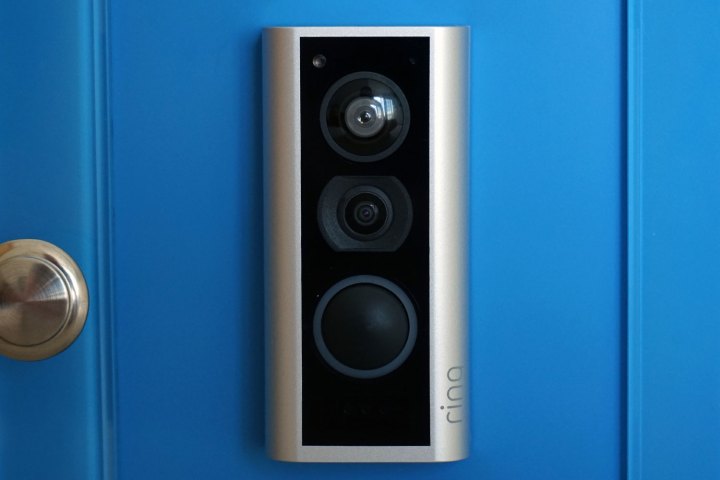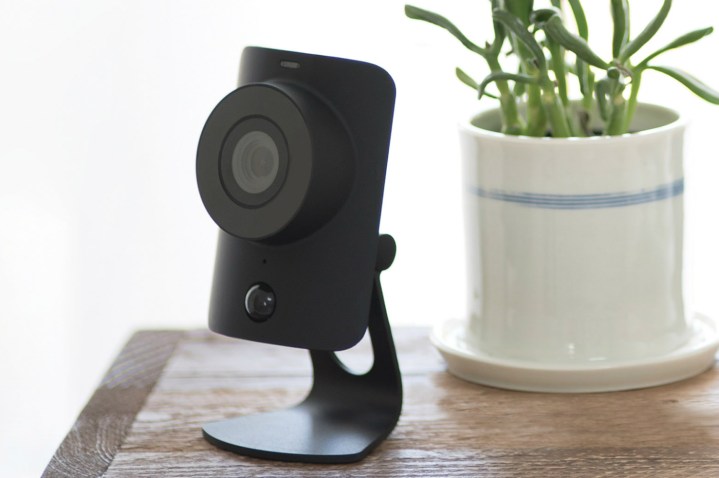
You’re sitting at home sipping on a freshly opened can of ice cold beer in your bathroom. Best of all, it’s a Saturday afternoon. Pure bliss.
Then, by chance, you lock your gaze squarely at the indoor security camera perched on top of a bookshelf. The more you stare at the camera, the more you feel like someone’s watching. The news about Ring’s cameras being hacked doesn’t help.
You know your camera probably isn’t compromised. But if it was, how would you know? Unless a hacker attempts to chat with you using the camera’s built-in speaker and mic, you would be oblivious.
That’s why all smart home security cameras should have a mechanical privacy shutter. Will it prevent hacking? No. Still, it’s a basic a preventative measure that offers peace of mind. It’s also a feature very few cameras offer.
Why most cameras don’t have privacy shutters
Why is that?
A mechanical shutter might seem simple, but it does add to a camera’s cost. Darrell Holigan, Senior Engineering Manager at SimpliSafe, gave me the scoop on the privacy shutter found on the company’s SimpliCam security camera.
“The overall bill of materials impact is probably around a dollar,” said Holigan. “It may not seem like much, but it’s certainly not negligible.” In the SimpliCam, components include a metal stainless steel shutter that’s electrically actuated using a solenoid, controlled by the camera’s firmware.
A dollar doesn’t seem like much, but Holigan points out there’s more to it than just materials. “There was a considerable amount of R&D effort that went into getting this shutter to perform properly,” he said.
The SimpliCam’s $99 price is a bit high when you compare it to similar models, like the $60 Ring Indoor Cam or $30 Wyze Cam. Neither of them offer a sophisticated, remote-control privacy shutter.

Privacy shutters add another complication, as well. They can break. Over time, a privacy shutter may become stuck or wear out. That’s why smartphones don’t have pop-up cameras, like the one used by the OnePlus 7 Pro.
Holigan stressed that SimpliSafe’s implementation goes through stringent quality assurance testing. “This was part of that R&D process, refining the design and working with our manufacturing team and partners to make sure that the design is robust,” said Holigan. “I agree that anytime you have a mechanical actuated part, it’s something we’ve been able to optimize over the development cycle and in production to make sure those failure rates are minimized.”
Of course, “stringent quality assurance testing” doesn’t happen for free.
You don’t have to micromanage the shutter
Security cameras shouldn’t require constant monitoring. They should be autonomous, only notifying you when something important happens. Today’s security cameras use AI to distinguish between a burglar in your home, and your cat licking its butt on your coffee table.
The Google Nest Cam has advanced monitoring, including noise and motion detection. The camera is smart enough to detect noises that can signal trouble, like glass shattering, and then notifies you. Even the budget friendly Wyze Cam can distinguish between a smoke or carbon monoxide alarm going off.

SimpliSafe’s SimpliCam provides this same level autonomy for its shutter. I can set it so the privacy shutter stays closed when I’m home, giving me that peace of mind that it’s not peeping while I’m there.
SimpliSafe’s Head of Design, Dirk Ahlgrim, shared a story about how the mechanical shutter complements privacy in the home. “Recently I talked to a user. He said he works from home, and every day, his wife checks on him. He hears the click, and he knows she’s now streaming and looking at him,” said Ahlgrim.
That audible warning alerts you when the camera turns on. You can also set the camera to record when you’re at home if certain conditions are met, like when a door is opened, or a window sensor is tripped.
Hackers can’t see through physical barriers
Hackers can hack your camera without you knowing. If they’re sophisticated and adept in their craft, they may even disable the LED light that usually indicates a camera is recording.
In my piece about why hackers are hacking security cameras, security expert Gregory Hanis explained how this can be done. The remote access tool he programmed in the the late 1990s, Sub7, let hackers access webcams without any indication the camera is on.

Holigan explained how SimpliCam’s shutter helps solve that problem. “When the privacy shutter is closed, both video and audio encoding are disabled in the firmware, and the microphone is electrically powered down. That prevents any audio or video from being generated or sent out of the camera.”
With SimpliCam, the privacy shutter mechanism kills power to the microphone. Not only is the shutter closed to prevent spying eyes from watching, but the microphone is disabled as well, eliminating that fear of someone listening in.
The shutter should be mandatory
As I discovered, adding a shutter to a smart home security camera isn’t free. Yet the benefits are invaluable. I can parade around my apartment without fear that someone is tapping into my camera’s feed and recording.
You shouldn’t settle for anything less than excellent privacy features, even if that adds to the cost, or makes the camera more complicated. You deserve to feel safe in your homes. Shutters won’t entirely stop smart home hacking, but it’s an effective solution that can protect your privacy even if the camera is compromised.



